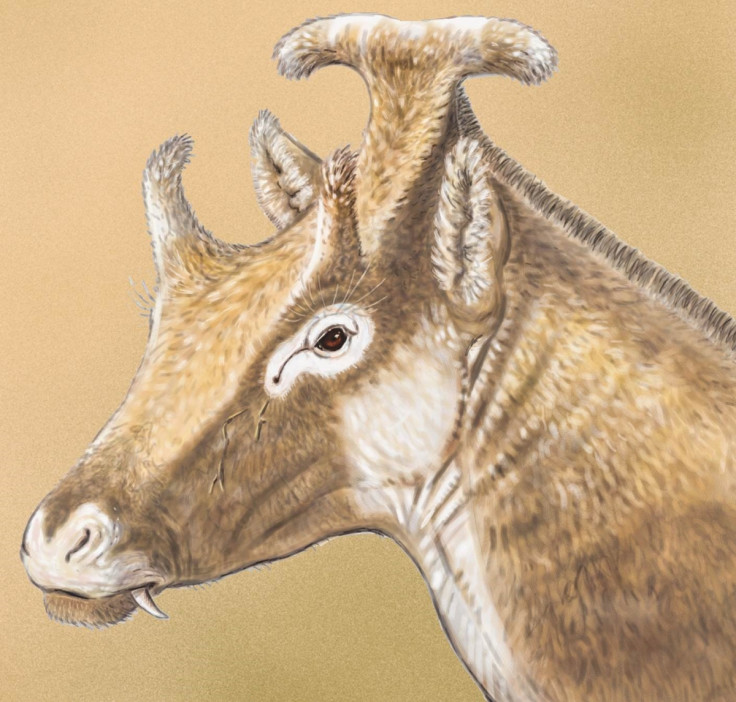Xenokeryx amidalae: Strange 'Padme Amidala' ruminant discovered in Spain is extinct ancestor of giraffes

A weird, three-horned mammal discovered in Spain is thought to be an ancient ancestor of the giraffe. Xenokeryx amidalae lived between 11 and 15 million years ago during the middle Miocene period and was a palaemerycid – an extinct family of ruminants that were thought to have been ancestral to deer.
Scientists from Spain's National Museum of Natural Sciences in Madrid described the new species in the journal PLOS One, using the well-preserved cranial and dental remains. The fossil was found at the La Retama site in Spain, but palaemerycids have been discovered as far as China.
The team named Xenokeryx amidalae after the fictional character Padme Amidala from Star Wars because of its "striking resemblance" of its occipital appendage to one of Amidala's hairstyles in The Phantom Menace.
Researchers say the discovery of Xenokeryx amidalae helps to reinterpret the understanding of the morphological evolution of the palaemerycid group, showing there are two main lineages. Researchers found that despite their similarity in looks, Eurasian palaeomerycids are not related to North American dromomerycids – animals similar to antelope and deer.
Instead, they found Eurasian palaemerycids belong to the same clade that giraffes belong to – a clade they named Giraffomorpha. "We find that Eurasian palaeomerycids are not closely related to North American dromomerycids, thus rejecting the more accepted view of palaeomerycids as the Eurasian part of the dromomerycid lineage," they wrote. "Instead of this, palaeomerycids are nested with the African Miocene pecoran Propalaeoryx and with giraffoids. On the other hand, dromomerycids are closely related to cervids."
They said further research will be required to establish features not yet described. Study author Israel Sánchez added: "Establishing the place of palaeomerycids in the ruminant tree gives us insights into the evolutionary history of the large clade of pecoran ruminants that include giraffes (Giraffa and Okapia) as its only extant survivors, and shows us the amazing diversity of an ancient lineage that inhabited both Eurasia and Africa."
© Copyright IBTimes 2025. All rights reserved.






















